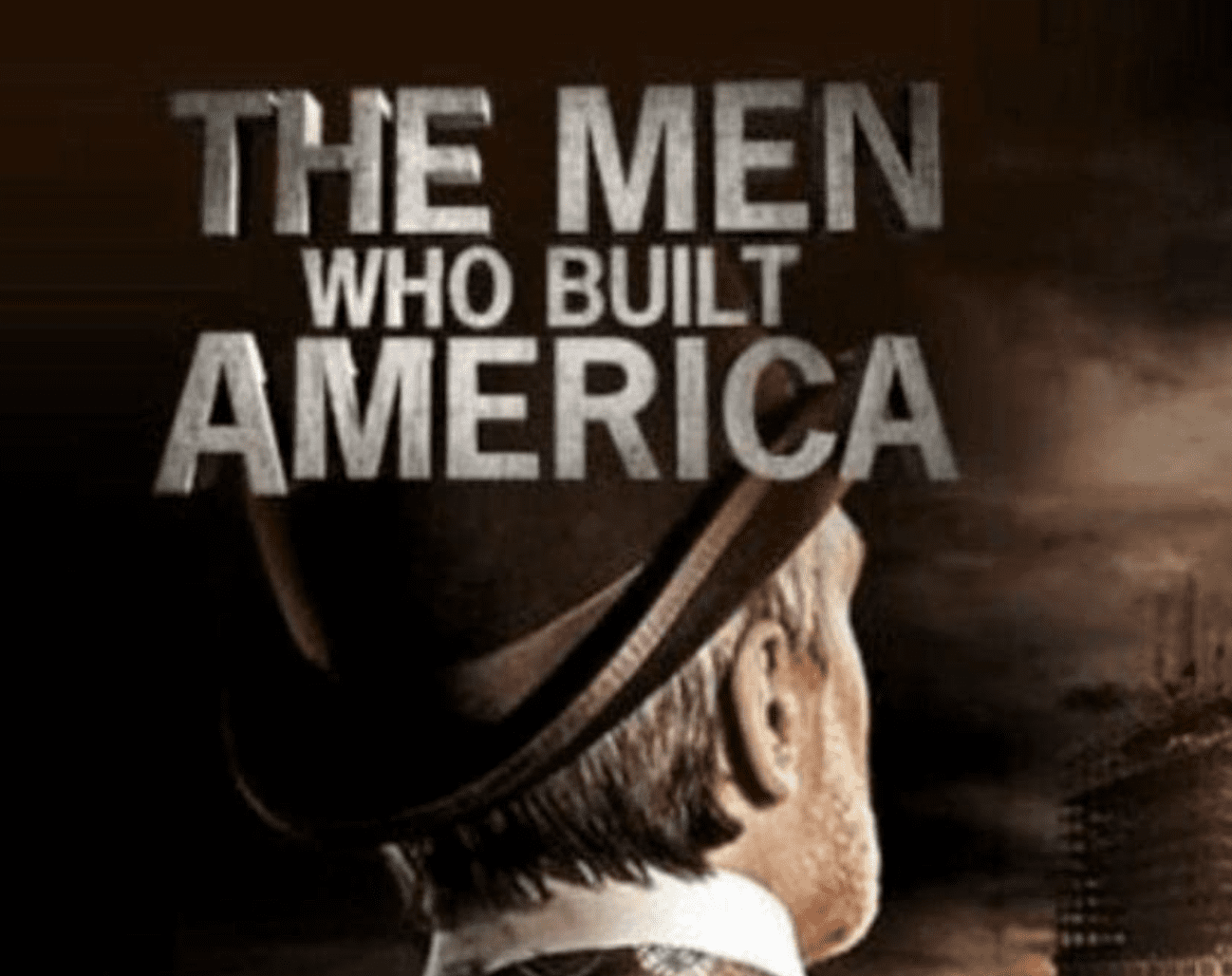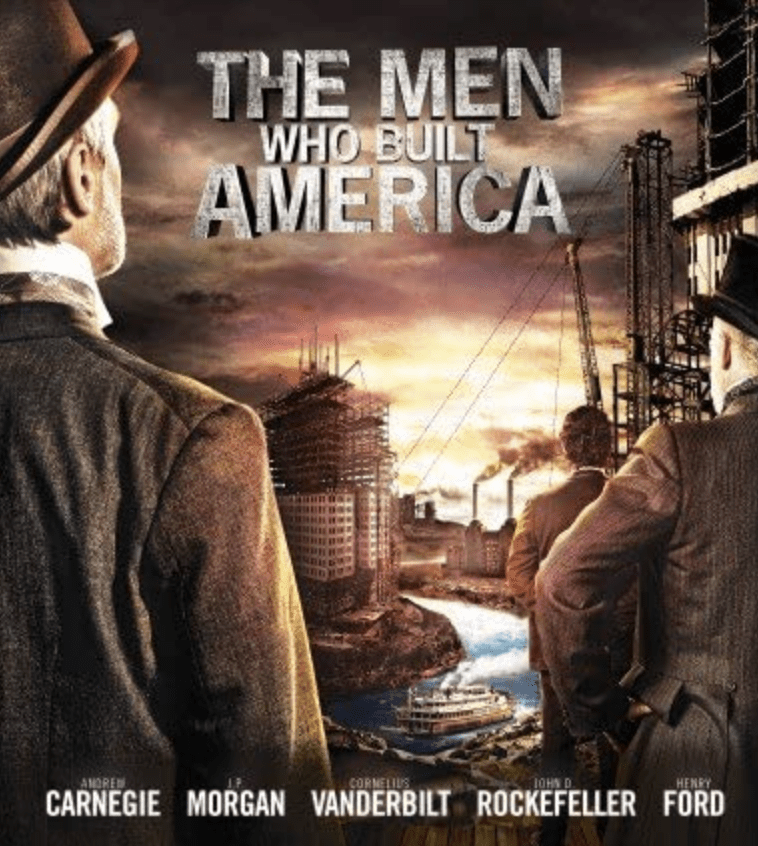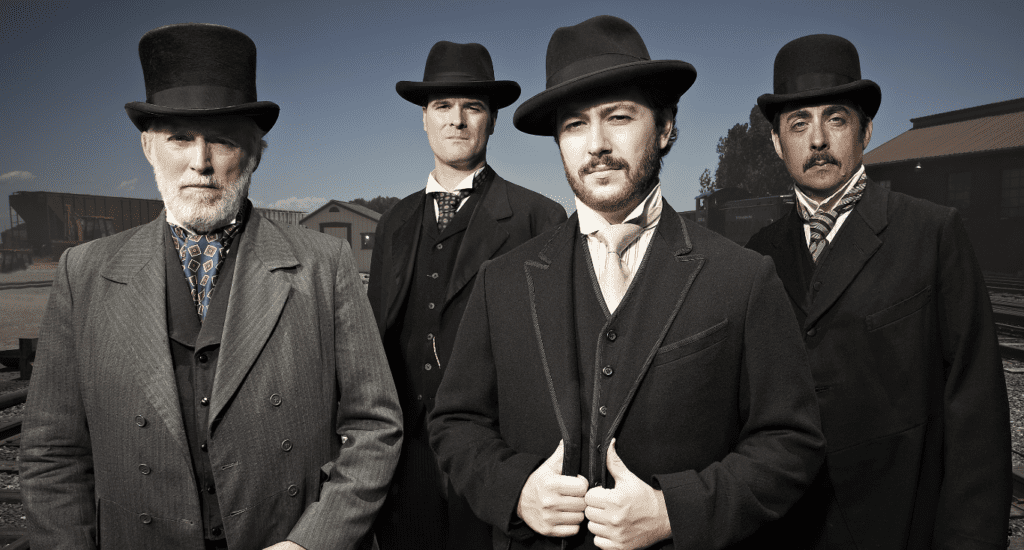The Men Who Built America

The Men Who Built America – Rockefeller, Vanderbilt, Carnegie, Astor, Ford and Morgan.
Their names are part of history and synonymous with the American dream.
These men transformed every industry they touched: oil, rail, steel, shipping, automobiles, and finance.
Cornelius Vanderbilt, John D. Rockefeller, Andrew Carnegie, J.P. Morgan and Henry Ford are names synonymous with innovation and big business in America.
They all built empires and created advances in technology.
The Men Who Built America – They helped shape the country in its early days by doing things such as developing the models for modern railroads, creating the modern financial system and making cars accessible to the masses.
The men came from meager beginnings to build their respective empires, which helped formulate the concept of the American Dream.
The Men Who Built America – This series profiles the lives of these early visionaries and includes perspectives from such modern business icons as Mark Cuban, Alan Greenspan, T. Boone Pickens and Jack Welch.

The Men Who Built America Storyline
The Men Who Built America in some international markets) is an eight-hour, four-part miniseries docudrama which was originally broadcast on the History Channel.
The series focuses on the lives of Cornelius Vanderbilt, John D. Rockefeller, Andrew Carnegie, J. P. Morgan, and Henry Ford.
It tells how their industrial innovations and business empires revolutionized modern society.
The series is directed by Patrick Reams and Ruán Magan and is narrated by Campbell Scott.

The Men Who Built America Episodes
Miniseries shines a spotlight on the influential builders, dreamers and believers whose feats transformed the United States, a nation decaying from the inside after the Civil War, into the greatest economic and technological superpower the world had ever seen.
The Men Who Built America is the story of a nation at the crossroads and of the people who catapulted it to prosperity.
A New War Begins
Cornelius Vanderbilt grows from a steamboat entrepreneur to the head of a railroad empire, and gets into a heated rivalry with James Fisk and Jay Gould; the up and coming John D. Rockefeller founds Standard Oil.
Many business owners lay their own rail lines which leads to the Panic of 1873.
Later, Rockefeller starts to expand his wealth by diverting his business from the railroads to a new innovation, oil pipelines.
Bloody Battles
Andrew Carnegie builds an empire around steel, but finds himself struggling to save face after the ruthless tactics of his business partner, Henry Clay Frick, result in both the Johnstown Flood as well as the bloody 1892 strike at the Homestead Steel Works.
Changing the Game
J. P. Morgan proceeds to banish the dark with the direct current electric light of Thomas Edison, but the two soon face serious competition from the alternating current of George Westinghouse and Nikola Tesla.
As the 19th century comes to a close, the titans of industry must try to work together to stop a new threat in budding politician William Jennings Bryan, who threatens to dissolve monopolies in America.
When One Ends, another Begins
Rockefeller, Carnegie and Morgan team up to help elect William McKinley to the U.S. presidency by paying for his 1896 campaign, to avoid a possible attack on monopolies.
However, fate intervenes when McKinley is suddenly assassinated, and Vice President Theodore Roosevelt assumes the presidency and promptly begins dissolving monopolies and trusts in America.
Meanwhile, Morgan buys out Carnegie Steel to make Carnegie the richest man in the world, and Henry Ford designs an affordable automobile with his Model T and starts his own business, Ford Motor Company, which sets a new business model for companies to follow.



